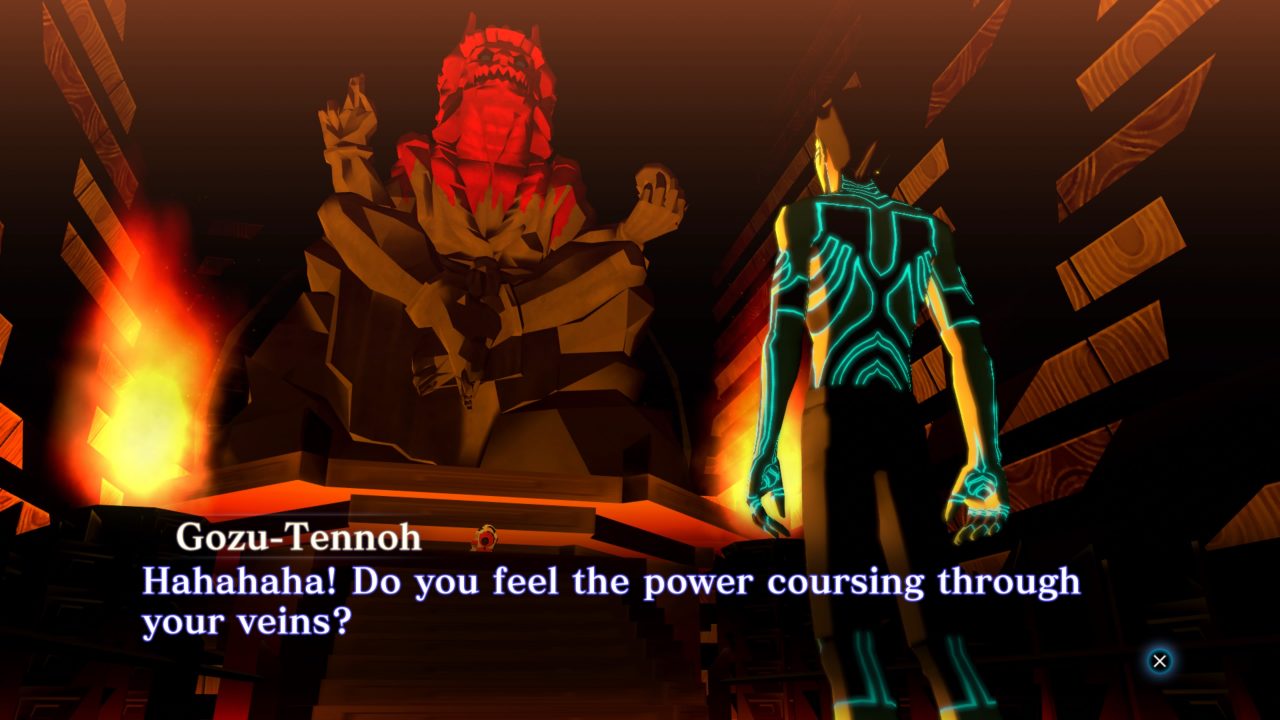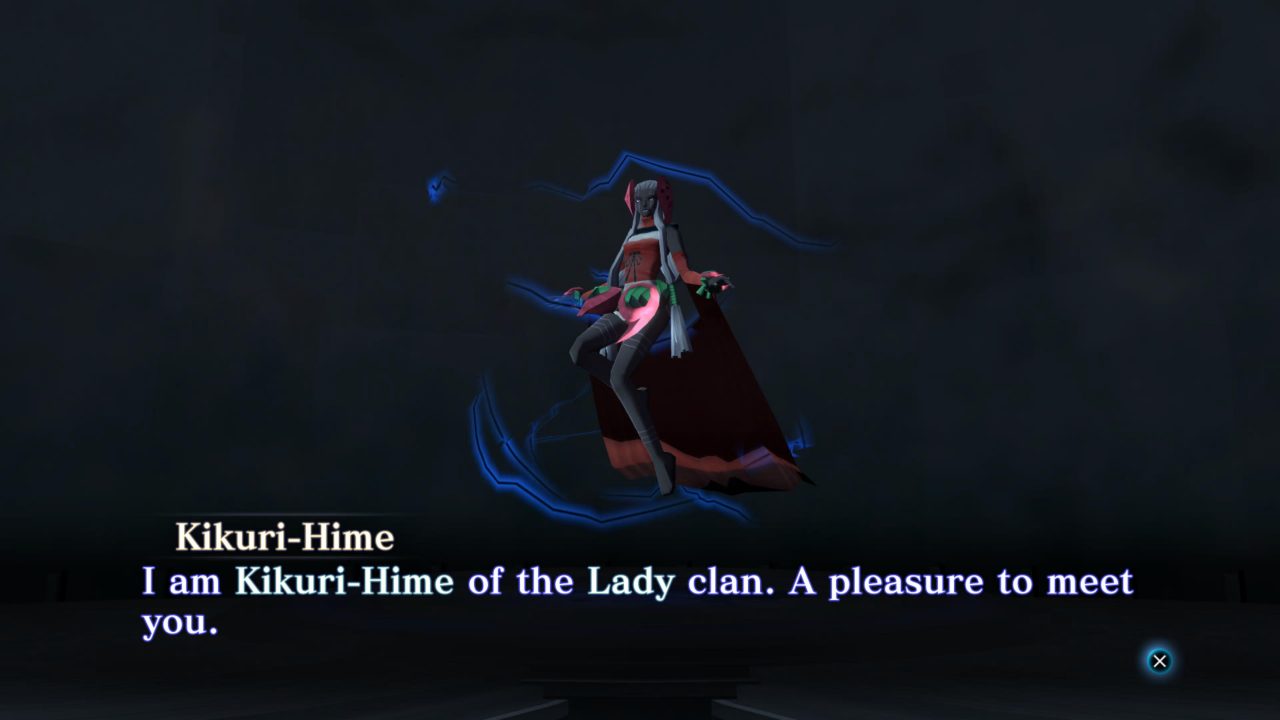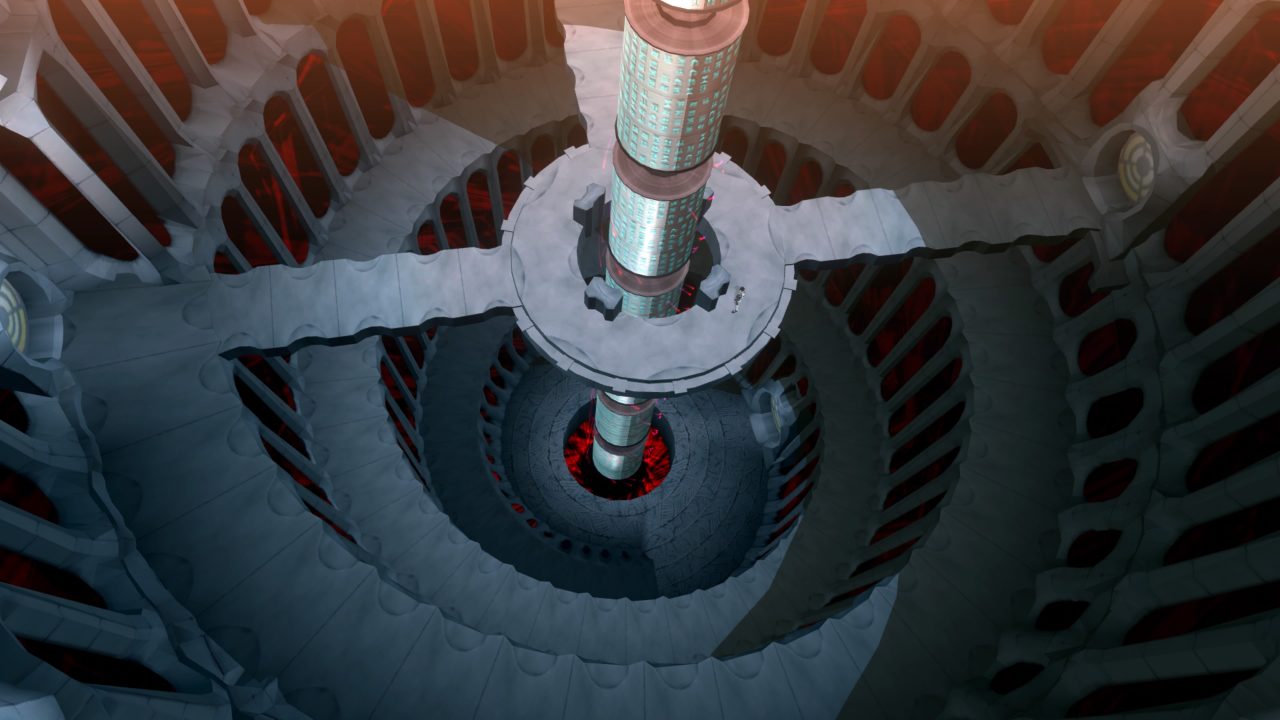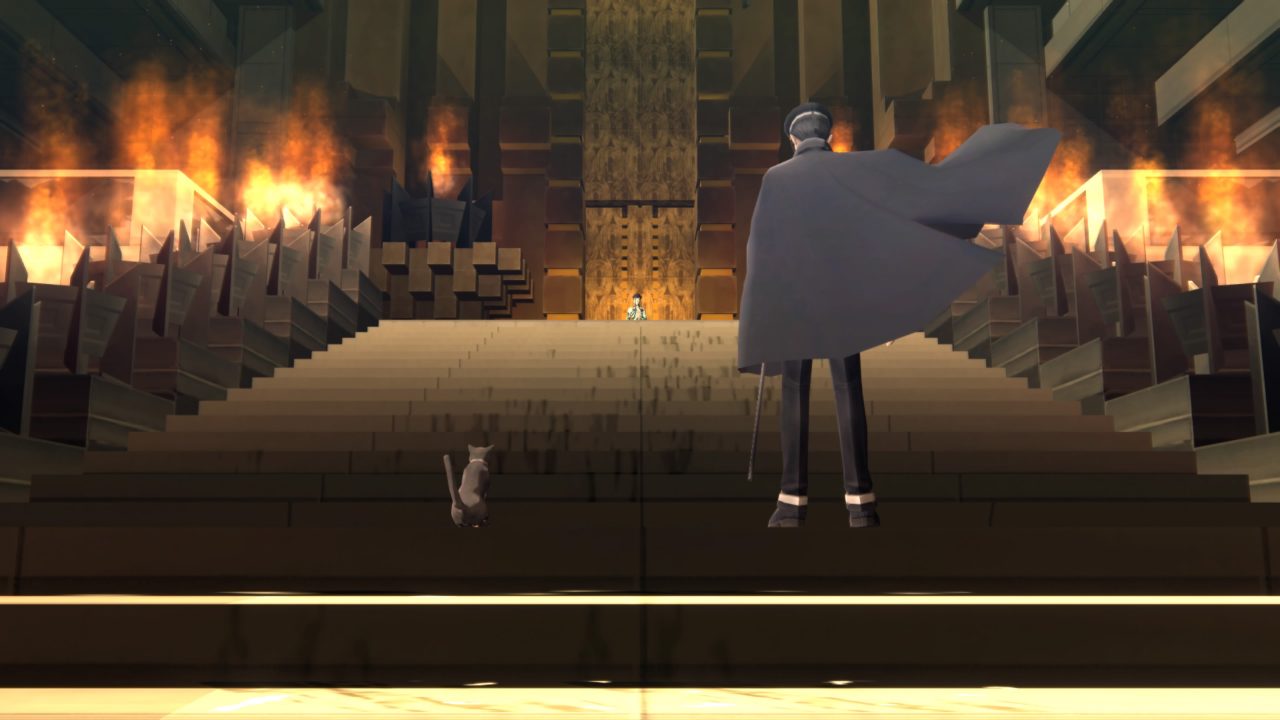See the video version of this review at the end of this page!
Back in 2004, Shin Megami Tensei: Nocturne was the first mainline Shin Megami Tensei game released in North America and Europe. Absent a numeral in the English title, Nocturne disguised its ties to previous games and promised something new. Well-received, the game quickly became a cult classic, but has not been easily accessible in the current day. Luckily for all of us RPG fans, Nocturne has another chance to bring the spotlight to the mainline series with Shin Megami Tensei III Nocturne HD Remaster (notice the III?) on Playstation 4, Nintendo Switch, and Steam. This version not only updates the visuals, but also implements some welcome tweaks, such as a snazzy new localization, first-time English and Japanese voice over, and quality of life improvements like suspend saves.
I often see Nocturne accused of “having no story,” so I am both pleased and surprised to report this couldn’t be further from the truth. The plot leaves a lot to unpack, and things are rarely simple or straightforward. Early in the game, you witness the end of the world in an event known as the Conception. Tokyo folds in upon itself, becoming a hollow sphere known as the Vortex World, and you, a human high schooler, are turned into a half-demon, or Demi-Fiend. At the centre of this new world dwells the blazing orb and Shinto god of fire, Kagutsuchi, taking a role somewhere between the sun and the moon.
Upon noticing your lack of convictions or ideals, Kagutsuchi tasks you with exploring the world to discover yourself. With this objective in mind, it should be no surprise that Nocturne offers opportunities for you to choose the path you take and the “Reason” you uphold. These Reasons are extremes embodied by the other human characters, including your former classmates, Isamu and Chiaki, your teacher Yuko, a CTO turned cultist, Hikawa, and an occult reporter, Hijiri, as they attempt to forge the next world into their own personal paradise.

Shin Megami Tensei III Nocturne HD Remaster’s constantly oppressive atmosphere and powerfully moody soundtrack lend themselves well to most of the characters’ bleak viewpoints. However, its bold use of colour suggests there is still hope in the Vortex World. Demons, human spirits, and the strangely human-like manikins who dot the world map and dungeons offer insights into events and locations during conversations. Sometimes these bits of dialogue are somber reminders of what was lost, and other times they make you chuckle involuntarily. Pivotal dialogue with the other survivors often takes place during exceptionally impressive cutscenes. Nocturne is nothing less than superb in its cutscene direction, from the content and camera/lighting work to the stylish effects emphasizing the points made by the characters. In this respect, it is clearly a cut above most games from its time, or even many games today.
Your party consists of your Demi-Fiend self and your menagerie of demons. “Demons” in the Shin Megami Tensei sense are more than just classical demons, as they represent mythological and religious figures from across the globe. In Nocturne, their designs are incredibly well-realized and purposeful in their execution. Each one is a unique and interesting take on the source material. Kazuma Kaneko’s gorgeous art direction allows charming creatures like Mothman and Jack Frost to fit alongside the behemoth living head of Abaddon or the creepy walking rib-cage Vetala.
There are a variety of ways to acquire new demons and fill out your party. In battle, you and your demon allies can negotiate with surprisingly sassy demons to attempt to recruit them, often through bribery. A select few demons evolve into new, more powerful forms after reaching a certain level. Likely, you most often find yourself in the Cathedral of Shadows, fusing two demons into a new demon that inherits some of their skills. Demons level up slowly on their own and can only learn so many skills, but their new form may receive a massive boost in level, stats, and a more robust skillset when fused. Some demons have specific requirements for their fusion, such as defeating them first in battle, sacrificing specific demons, or fusing them under specific phases of Kagutsuchi. You can also summon demons you have previously obtained by spending Macca (Nocturne’s currency). Experience points and Macca are plentiful, especially if you hunt for treasure and delve into optional content. Grinding is not required, especially for demons, but it can be tempting when your Demi-Fiend only needs one more level to fuse that powerful new demon you have your eye on.

Shin Megami Tensei’s “Press Turn” combat system is introduced in Nocturne and has become a series staple. Similar to Persona’s “One More,” Press Turn awards you and your enemies with extra turns when you target weaknesses and obtain critical hits. Conversely, you can lose turns or even entire rounds when targeting resistances, making strengths and weaknesses vitally important. As a result, combat feels a bit like rock, paper, scissors. However, once you’ve seen what a demon or boss has to offer, you can fuse the right demons and turn the tide of a seemingly impossible battle. In this respect, combat starts to feel like solving a puzzle, where a strategic approach is better than a tactical one. For me, this isn’t a bad thing; I love planning out linked fusions to get the perfect demon for a given situation. A tip: have a demon learn Fog Breath early and never let the skill go.
Thanks to magatama, your Demi-Fiend is vastly more mutable than any singular demon. Ingesting these bug-like creatures boosts your stats, grants resistances (and potentially weaknesses), and affects the skills you learn upon leveling up. This progression system poses an interesting conundrum: your Demi-Fiend can learn a massive number of skills, but you can only keep eight of them. The temptation to switch out one of your skills for a new one is always there, even when you know it doesn’t make sense. In addition to learning new skills, leveling up also lets you allocate a point to one of your stats. These choices allow your Demi-Fiend to eventually become the game’s most potent bruiser, caster, support, or anything between. A strange side effect of this system is that many of the magatama that teach physically-oriented skills come later in the game. A magic-wielding Demi-Fiend will have more choices to make early on, while a Demi-Fiend more fond of solving problems with their fists may take on a support role at first.
The Shin Megami Tensei series has a reputation for being not only challenging, but unforgiving. It’s Persona’s more dark, mean, and scary older brother. As a beloved entry in the series, Nocturne already did a lot to ease new players in, but a new merciful difficulty mode opens the game up even further to players of all skill levels. Shin Megami Tensei III Nocturne HD Remaster makes a good case for being the best point for anyone to step into the series.

Players tackling a Shin Megami Tensei title for the first time may feel worried, but Nocturne’s learning curve is surprisingly gentle. Battles are slow to introduce enemies that are resistant to multiple elements, and enemies rarely drain or repel attacks early on. In the initial areas, enemies seldomly use instant death magic or nullify buffs and debuffs. Some boss encounters are meant to check your skill level, including the infamous Matador, but an understanding of Press Turn and demon fusion — along with remembering your buffs and debuffs — overcomes all enemies. Dungeons are even kinder to the player at first, as series staples like pitch-black rooms, damage floors, traps, and teleportation tiles are held back until later dungeons. A single button press accesses a crystal clear map that helps navigate even the most sprawling of dungeons. By the time Nocturne starts to push back, it has already taught you how to handle it.
Nocturne’s greatest challenge lies in navigating through the optional Labyrinth of Amala. To gain access to the five levels of the Labyrinth, you must defeat the deviously difficult Fiends scattered throughout the game. The Labyrinth lies within the Amala Network, a flow of Magatsuhi (demonic energy) underlying the Vortex World and beyond, which is normally used for fast travel at save terminals. The Labyrinth is vast and dangerous and contains some of Nocturne’s most devilishly clever adversaries. Numerous rewards await those who brave the Labyrinth, including copious treasure, special demons purchased from a shady demon broker, and extra lore-revealing cutscenes. Completing the Labyrinth is also required for one of Nocturne’s possible endings.
Shin Megami Tensei III Nocturne HD Remaster is damn close to perfect. A few minor issues do deserve mention: the screen often flickers black after dialogue or opening a chest, some low-resolution textures stick out oddly, and the audio quality is unfortunately lackluster. Thankfully these problems do little to take away from a stellar remaster and are eclipsed by its improvements.

Some big fans of the original may disagree, but I find the new localization much improved. The names of demons are translated more accurately, and dialogue is more conversational, which better suits the added voice acting. The personality of characters comes through in their choice of words, and the wonderful performances given by the English and Japanese voice actors enhance this. Another change fans may have qualms with is the lack of Dante from the Devil May Cry series in the base game. The original English release featured a cameo from Dante, but he now is paid DLC. Raidou Kuzunoha from Shin Megami Tensei spin-off series, Devil Summoner, takes his place, a character whose design I personally prefer. Still, it would have been nice if both options could have been available in the base game.
Nocturne isn’t just a classic to be admired from afar; it is “required reading” for any RPG fan and a modern-day masterpiece. This was true before Shin Megami Tensei III Nocturne HD Remaster existed, but this version makes it easier and smoother than ever to experience. The journey you undertake as the Demi-Fiend is one you don’t want to miss and certainly one you will never forget.




